Utah Canyonlands — Moab and White Rim Road
Ranger Ralph, our intrepid 4X4, lurched and bucked up the 30% grade, alternately spitting rocks, bouncing off of them, and diving into hidden crevices. The “road” had a ragged wall on one side, and a sheer drop on the other. The distance between them was about 7-8 feet. At the top, we got to reverse the process….
We were on the White Rim Road, a famous 80-mile tour of the upper region of Canyonlands National Park, and we were negotiating Murphy’s Hogback, a notorious promontory over which the Road scrambles and twists on its way to the Green River bottom.
But I’m getting a little ahead of myself. Let’s go back a little bit, when this all began.
CANYONLANDS
Ever since visiting eastern Utah in 2012, I’d longed deeply for a return. I had learned of, but not experienced, several unique features of the area, and I was anxious to explore it in depth. We had already seen more of the Grand Staircase of the Escalante, and it was time (finally!) to get back to Canyonlands.
We trekked fairly quickly out of California and across Nevada, via US-50, and worked our way over to UT-24. Passing the Capitol Reef area, we elected this time to just drive on through. The big weathered stone formations were hinting at what was to come.
A great deal of the southern half of Utah is formed of old sea beds, risen a mile or more above sea level, and eroded down into fantastic formations, canyons, and rivers. A major portion of this area has been designated a National Park, and no part of the U.S. is more deserving. Like the world-famous Grand Canyon, Canyonlands was formed by crustal up-thrust, and erosion by the Colorado and Green Rivers. They went to work for about five million years, and produced literally thousands of square miles of some of the most spectacular geological scenery there is to see.
Further to the south, the Grand Canyon is focused largely on the Colorado, and very deep (5000′). Canyonlands canyons are far more diverse, scattered, and not as deeply gouged (2000′ or so). Both of these spectacular Earth features are overwhelming in their scope and vastness, but in subtly different ways. I think the thing I like most about Canyonlands is its accessibility.
OFF-ROADING
One of the most singular differences between the Grand Canyon and Canyonlands is the broad availability and diversity of back-country roads in the latter. Most of the Grand Canyon is accessible only by watercraft and foot trails (including horses and mules in some places).
But Canyonlands has literally hundreds of miles of back roads, all publically accessible — and these are an absolute delight for mountain bikers, motorcyclists, and 4WD enthusiasts.
What’s more, the area is so enormous, its vastness soaks up the multitude of visitors quite easily. It’s not at all like so many “OHV” areas we’ve seen, all torn up with vehicle over-use. In part, the rigorous Park permit system, and strict no-use rules for anything but designated routes, are a great help. But even outside the Park, we saw relatively little land damage or abuse. In many, many hours on the various tracks, we never felt crowded or any sense of the territory being over-visited. In fact, at one point (when a rock shredded a tire), I was a half-hour into the tire change before anyone came along the road.
MOAB
At one point in time, Moab was a sleepy little town with a few shops and restaurants, catering to tourists visiting the National Park. But somewhere along the way (some say within just the last ten years), the Moab region was “discovered”. Mountain bikers and off-roaders began coming to the town in throngs, eager to experience the fabulous sandstone formations in the back country, and the fun/challenging roads that led there.
At this point, Moab is a thriving tourist center with dozens of shops, restaurants, several markets, gas stations, back-country gear stores, and a TON of off-road touring and rental providers. New construction is everywhere you look, and business people appear to be thriving.
WHITE RIM ROAD
When I first heard of the White Rim Road, I thought Wow, how cool is that? I wonder if it takes a fire-breathing Jeep, or maybe Ranger Ralph could tackle it? Depending on start/stop points, the Road is somewhere between 78 and 110 miles long — can it be done in one day? Should it be done in one day? Can you camp anywhere along it? Lots of questions, answered only by doing the deed.
Turns out, except for a few “technical” sections (aka “damn difficult”), the Road can be attacked by fairly average 4X4’s and fairly average drivers. The key is caution, and taking your time.
We started carefully, doing small “nibbles” of the Road first, with 2-3-hour forays into each end of it. Both ends of the Road are marked by tremendous climbs/descents, executed as knuckle-whitening switchbacks against the face of the canyon walls. These are (in my opinion) some of the most fun sections of the road. They are reasonably safe, and not too challenging — but they are viciously unforgiving of mistakes. Serious concentration is required.
I didn’t try to do a “trip log” kind of exploration, so I’ll leave a mile-by-mile description to other (more thorough) authors. Here are a few of the highlights – – –
The Shafer Canyon entrance has the biggest and highest switchbacks. You can see some of it from the Park road, and it looks kinda scary. Then, once on it, you discover it actually IS scary.
The Mineral Canyon entrance doesn’t have as many switchbacks or height, but it still gets your attention. So does the other traffic (on either end), which can be cars, trucks, motorcycles, or mountain bikes. Some of the service providers even tow trailers on these roads!!
Mineral Bottom is at the lower end of the Mineral Canyon switchbacks, the broad Green River brightens the belly of the canyon.
Just a couple of miles north, Mineral Canyon airstrip rests not far from the river at the canyon bottom. This visit was a special treat for me and Karin, since we had flown our airplane into this exact spot many years ago, and camped for a few days. It’s only about 2000′ long, at roughly 4000′ elevation, and silty rough dirt. Needless to say, it’s for “off-road” airplanes suitable for bush flying and high density altitudes.
At any point along the Road, we might encounter other travelers. Everybody is super-courteous and makes space on the narrow track for passing each other. In this case, I was making space for the motorcyclists, and they were making space for me. Karin finally got out and told them to come ahead.
This guy brings his full-size Ford, and all its gear, down to Mineral Bottom on a regular basis, for bike and river trips.
There are several sections of the Road that are threateningly narrow. This piece is along the Green River, in between Fort Bottom and Mineral Bottom.
At various locations in the Southwest, it’s possible to find rattlesnakes. This one was at the base of a favored climbing place, Looking Glass Rock (outside the Park). Didn’t see any on White Rim Road — but they’re there.
This was truly one of the more amazing sights we encountered. On Shafer Canyon Road (the section leading to White Rim), these two women had taken a low-clearance 2WD Mitsubishi sedan over rough, rocky terrain that a lot of Jeep drivers would turn away from. Fearlessness, and some foolishness too. I told them they were headed for worse (true), and they reversed course.
Down at the southern-most portion of the Road, it passes “close” to the Grand View Overlook. By “close”, I mean less than a mile. But at this point, the Overlook was 2000 feet above us. My longest lens setting (2000mm !) captured the tourists against the safety railing.
There are scores of places to stop along the Road, as close to a canyon rim as you dare to go. People with fear of heights won’t like this part, but I love it. Karin is always yelling at me for being too close to the edge.
This is about a 200′ sheer drop. No vertigo allowed, please.
All access to the White Rim Road is by permit (day trips free, overnights $15). We had ours of course, and while we were out, a couple of Rangers came by and checked ours. Nice guys, with great jobs — but they don’t ride the Road much during the 100F+ summers. They took off on their KTM’s, about 2-3 times faster than Ralph could ever hope to go. I’m hoping to bring a motorcycle here sometime and ride some of these trails. So much fun, you can’t believe it’s legal.
Karin spotted this formation. I don’t think it has any official name — but as far as Karin is concerned, it’s going to be called Dog Rock from now on.
Scattered all over the southern portion of the Road are the weathering phenomena that look like isolated pieces of land floating in the air. They are responsible for the northern region name: Islands in the Sky.
Coming down off of Murphy’s Hogback, it’s best not to let the scenery distract you from driving duties….
Before we tried it, we asked a lot of questions, of both Rangers and frequent users of the Road. The general consensus was that the 80-100 miles would take about 12 hours of modest 4-wheeling — too much to attempt on a day-trip and still be having fun.
So we decided to simply go as far as 3-4 hours would take us, and then return on the same course. We wanted to see the entire Road, but we could not get an overnight permit (all camps full up during high season). And off we went.
Well, after about 3.5 hours (including a lunch break), we were 35 miles in, nearly half of the rough section of the Road. We thought it over — driving the smooth sections at the end, even after dark, would not be an issue. So we made the “point of no return” decision and kept on going.
It was a super decision, and gave us the opportunity to see and experience areas we would otherwise have skipped.
But then, there’s the occasional unintended diversion — like changing out a tire that’s been shredded by a sharp rock. Fortunately, it was NOT on one of the pucker-factor sections. With one jack not working, and some fiddling around, changing out the tire took about 40 minutes. Oh well.
I can assure you that the remaining miles were driven VERY carefully — we carried only the one spare.
As the Road works along the river bottom, there’s often not a lot of room to be had. Here, if you veer off the downhill edge, instead of rolling and crashing into a small crumpled metal ball, you simply become a submarine.
At almost any point along the Road, you can stop, sit, and stare at the scenery for as long as you want. Running at mid-height, in between the river bottoms and the plateau tops, has a special charm of its own.
Across from the exit from Murphy’s Hogback, an unusual formation appeared — in a land filled with unusual formations. This time is was my turn to name it (we don’t know if it has an official name). We’re calling it 1950 Plymouth Rock.
Every hour or so, a couple of bikes would pass by, like here on an easy stretch of the Road. Wearing full protective gear at 95F, they would never stop to chat for very long.
Finally, after a full day of rockin’-and-rollin’ across the rocks, the long smooth dirt road back to camp felt like a super highway. We loved every minute and every mile. Well, not so much the flat tire, but all the rest yup sir.
In the end, including lunch stop, photo stops, and rock-shredded tire stops, we spent about nine hours on White Rim Road — and it was easy to see how that could be expanded to several days.
CAMPING
Like the off-road access, camping sites can be found across a broad variety of terrain and locales. The “regular” camps, like the Park campgrounds and Horsethief, tend to fill up quickly (especially on weekends), but there are hundreds of dispersed camps for the asking. Here’s one that we found on a packed weekend, three miles off the main Park road. It was wonderful, quiet, and peaceful.
Flying drones in the Park is not permitted, but we were camped on BLM land, so we flew our nifty Mavic Pro for a few minutes to get the scope of our campsite.
[REASSURANCES: The Mavic Pro is wonderfully quiet, and we NEVER bother neighbors or animals or fly it over 100 feet or so. We were all by ourselves at this time (as you can see).]
It had been a fierce, drought-y fire season, and no open or wood fires of any kind were permitted. Propane camp stoves were okay, as were propane camp BBQ’s — but I’m glad that nobody saw this brief flare-up (flipping a juicy rib-eye steak) that Karin caught on camera.
Yes, my eyebrows are still intact, thanks very much for asking.
WANNA GO?
If you’re already a bike or 4X4 nut, you’re probably way ahead of me. Go over there and do it, you’ll never regret it.
But the great news is that you don’t have to be a rabid off-roader to enjoy the back country of Canyonlands. For the brave-hearted, take your 4X4 and carefully try out some of the trails. Or rent a Jeep in Moab and have at it. The more cautious can hire a driver and be toured by an experienced pro, across truly challenging terrain, and amidst truly gorgeous scenery.
In-depth types can reserve a camp site(s) and spend several days down in the canyons. But if you’re in need of a shower every day, then rent a hotel room and see the river bottoms by day-trips. There is truly something for everybody here, it’s quite impressive.
BUT WAIT, THERE’S MORE – – –
As impressive as it is, the White Rim Road just scratches the surface of this vast area. There are many, many more roads, there is Arches National Park just up the highway, and there are the Needles and Maze areas down south.
And, more is available than just off-roading, though we haven’t had a chance to try it yet. During a future visit, we will see if we can launch our kayak up-river, and float down to a take-out. And yes, you can make your own tours, or go with a guide, as you choose.
Really, it’s no surprise that Moab has grown so much in prominence. There is just so much fun to be had there.
STILL CURIOUS?
https://en.wikipedia.org/wiki/Canyonlands_National_Park
http://www.dangerousroads.org/north-america/usa/593-white-rim-road-usa.html
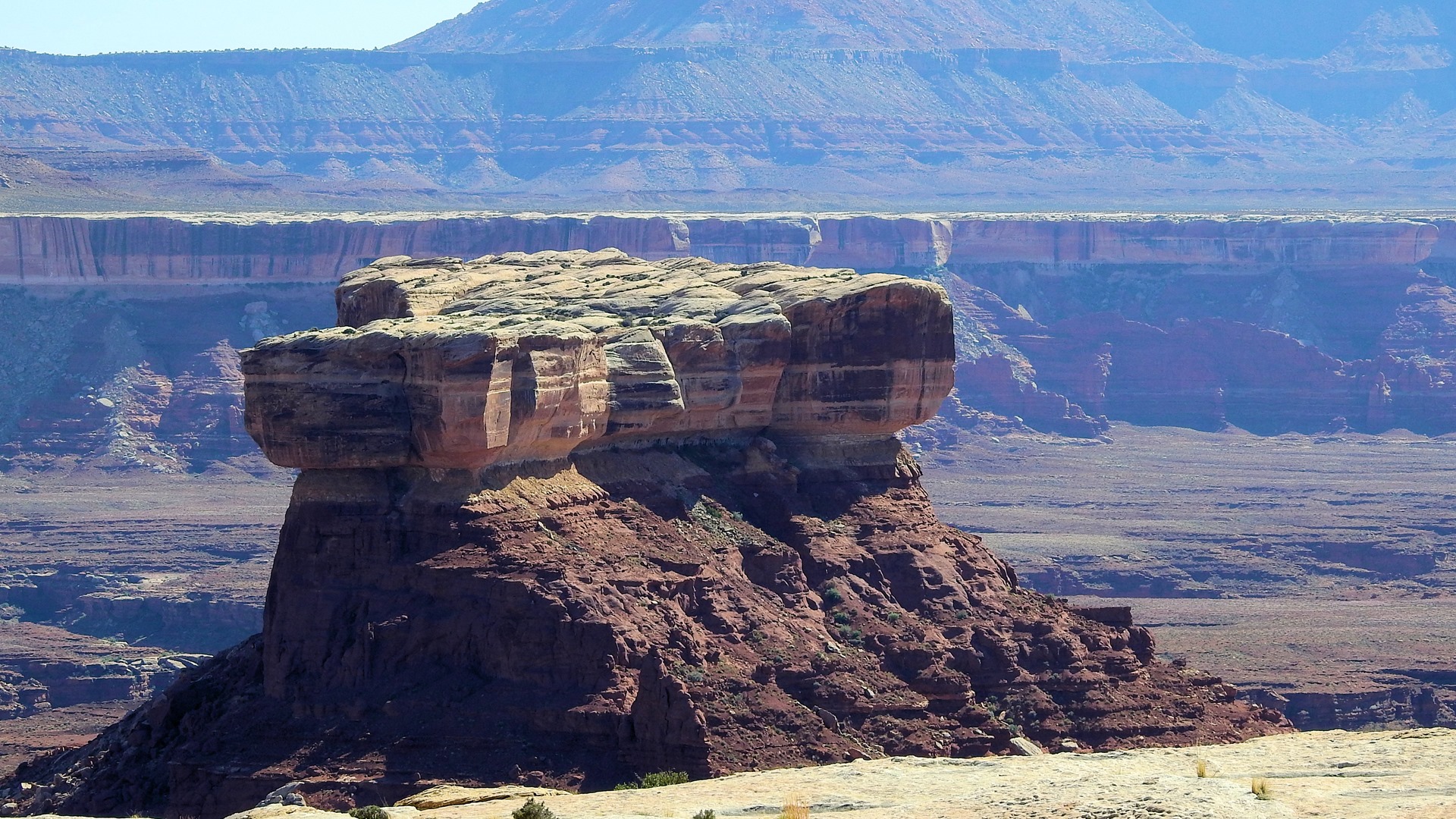
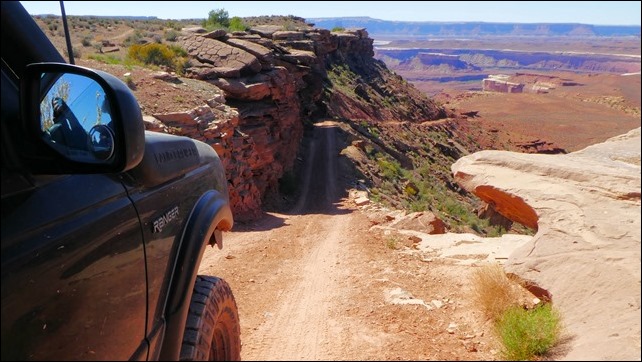
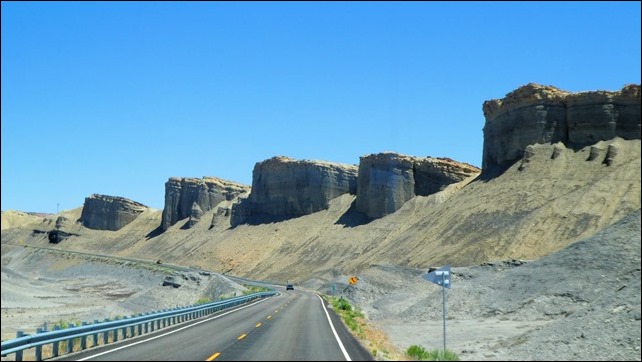
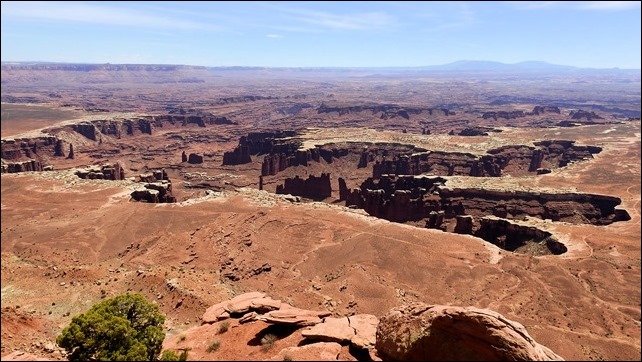
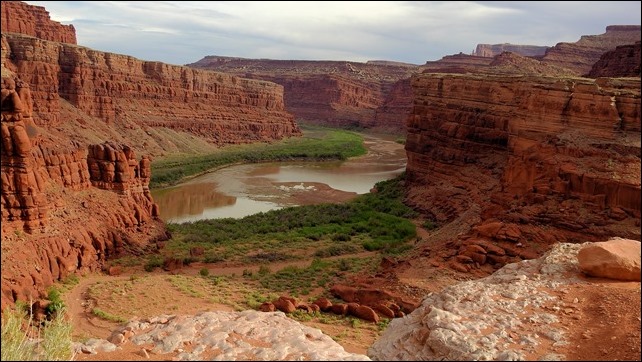
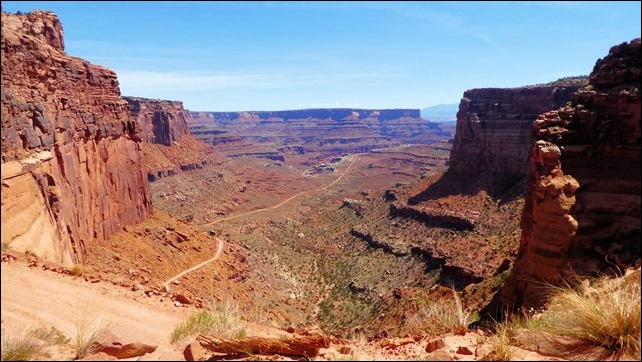
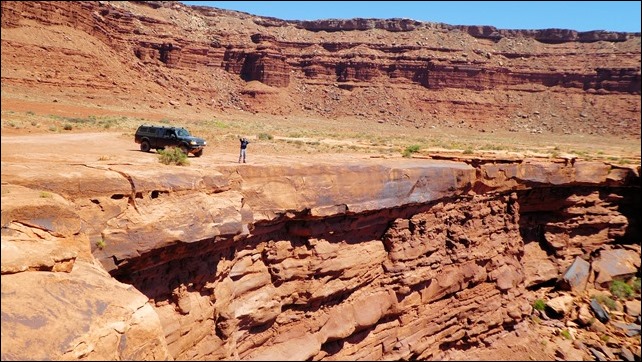
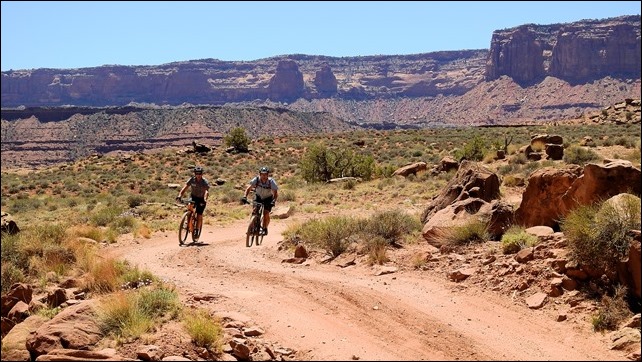
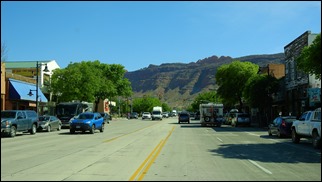
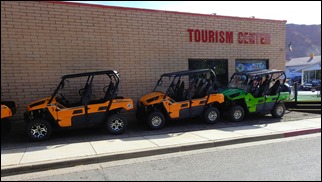
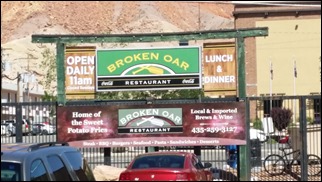
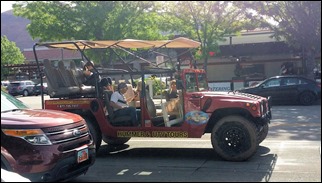
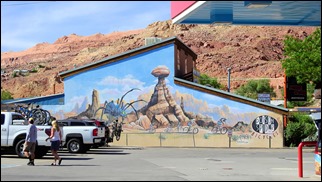
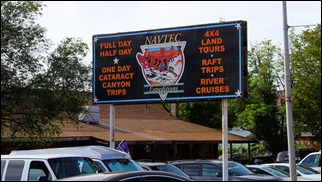
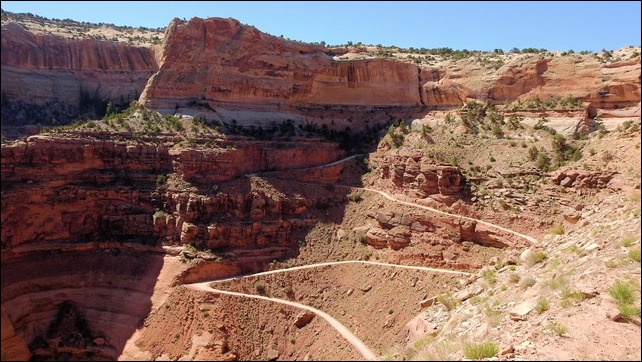
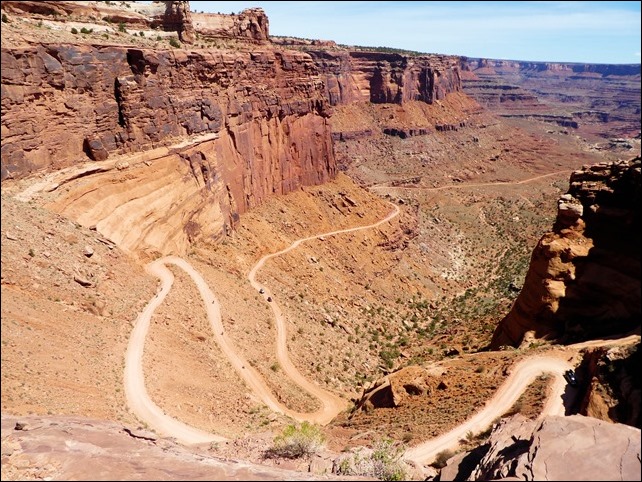
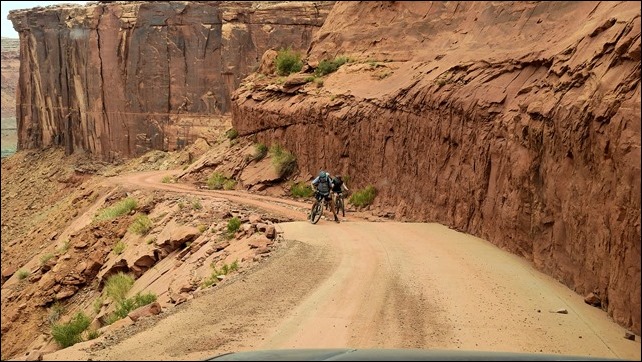
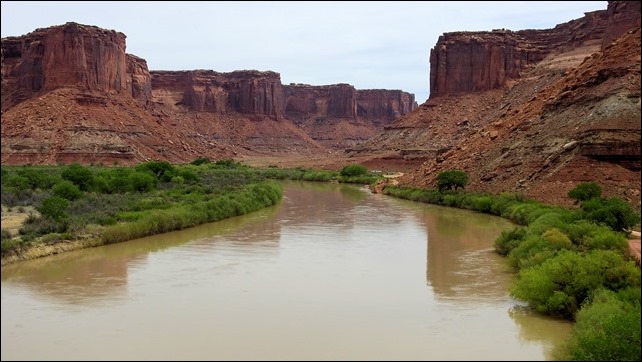
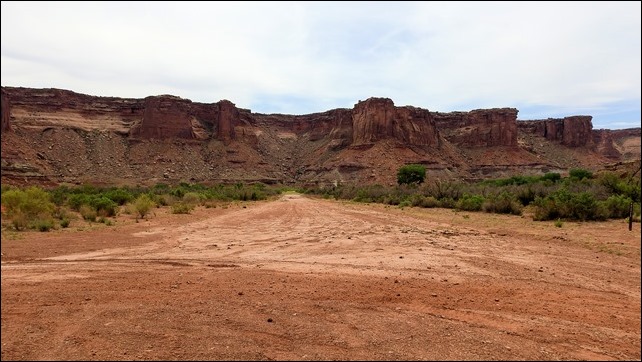
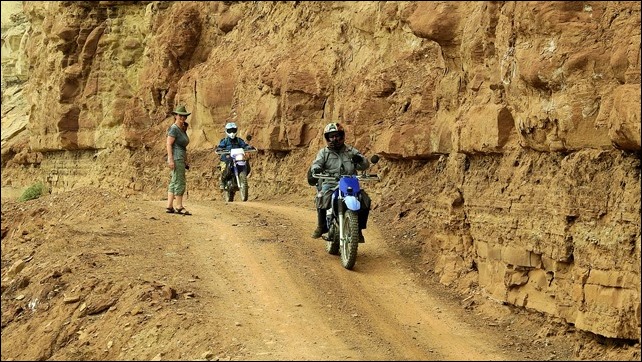
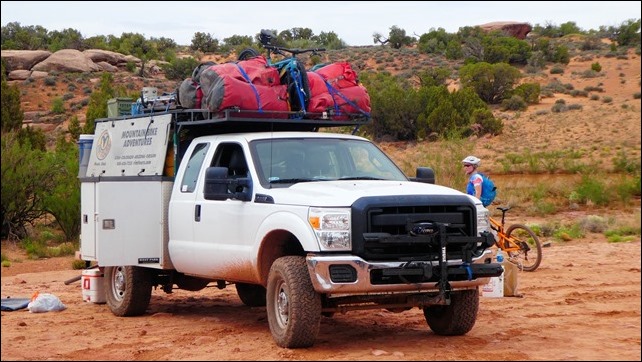
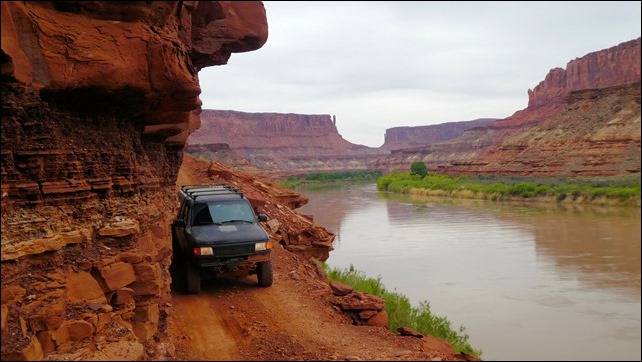
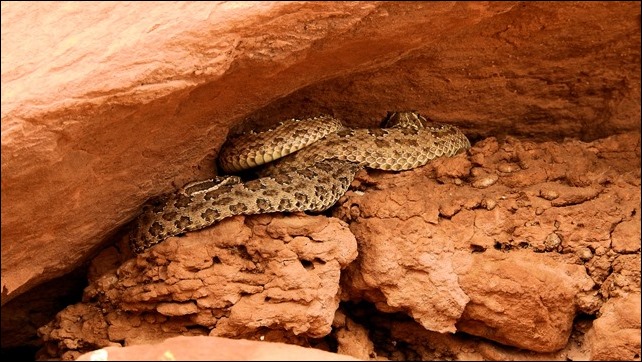
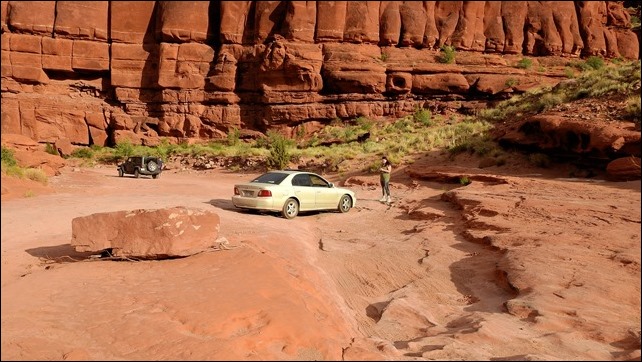
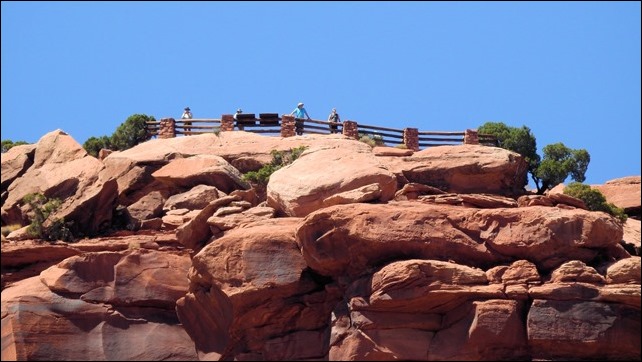
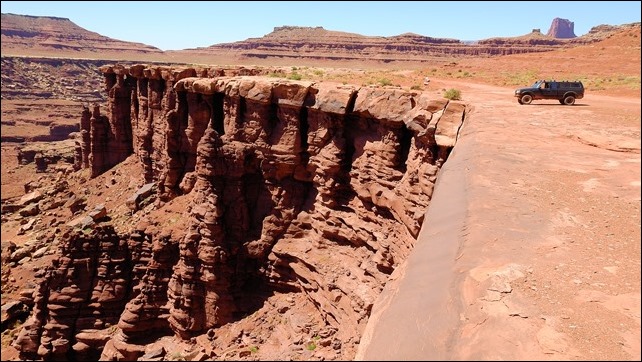
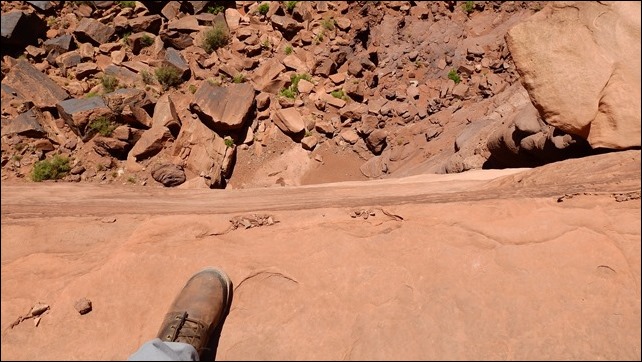
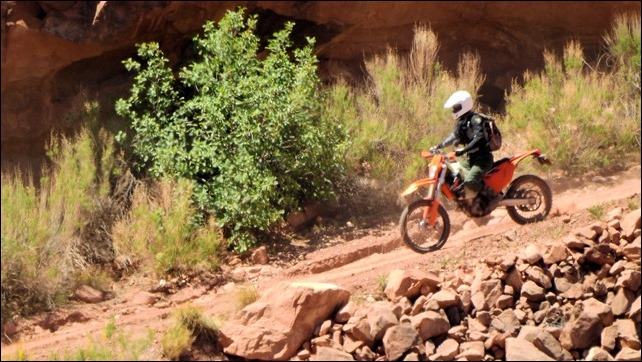
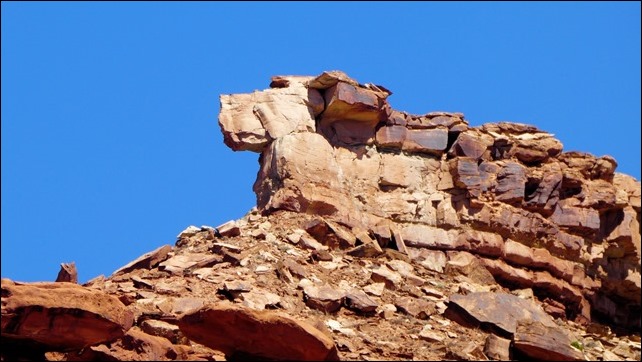
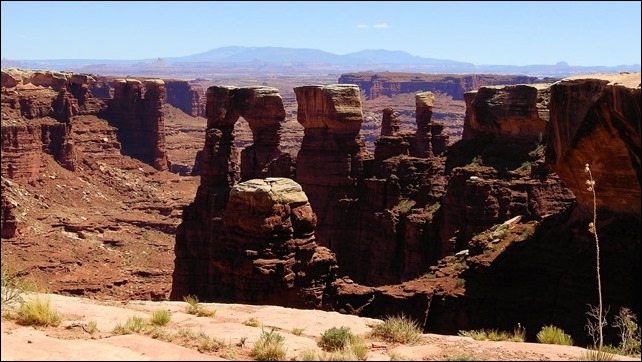
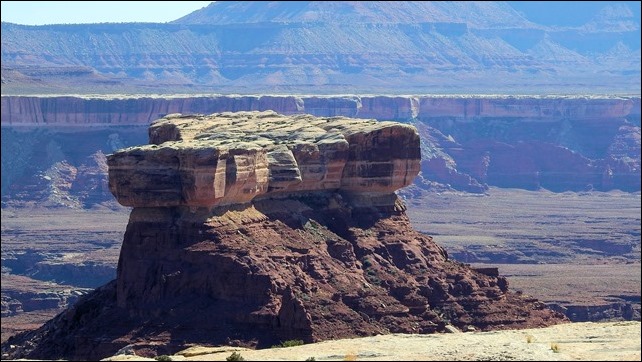
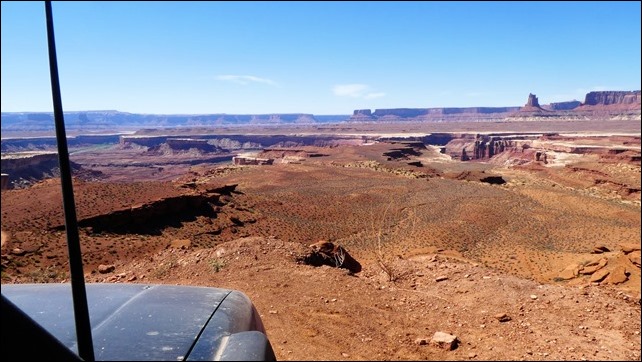
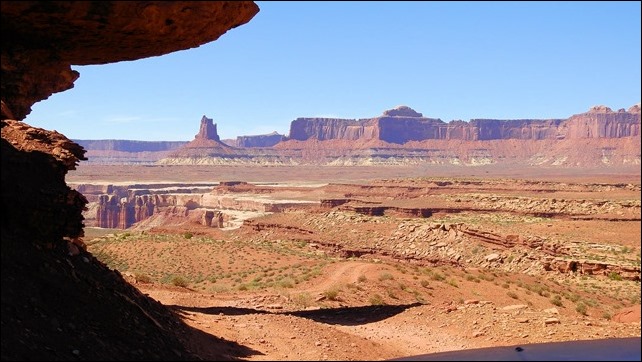
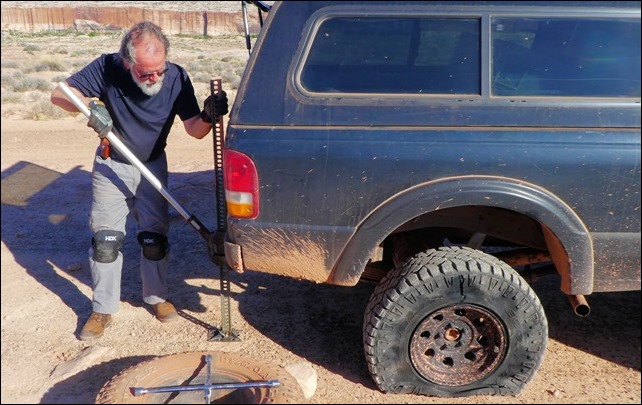
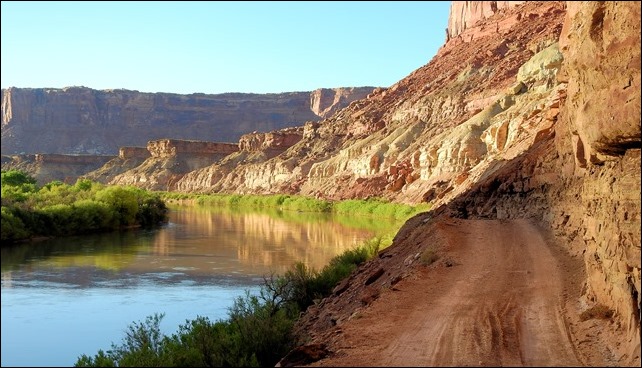
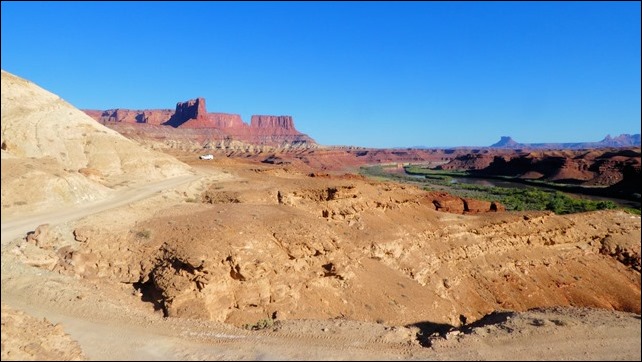
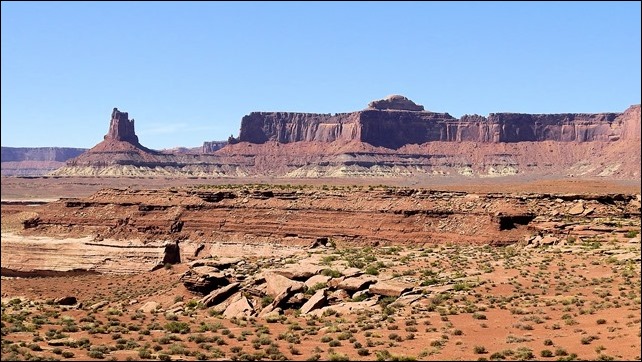
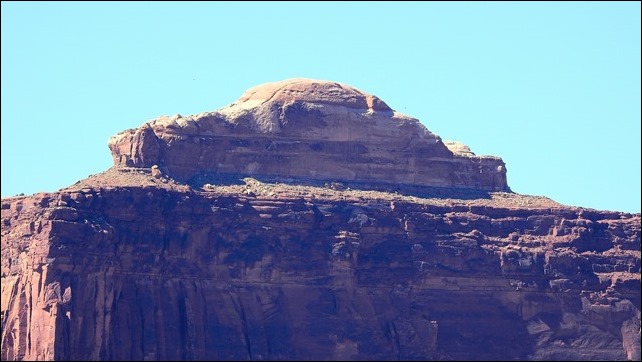
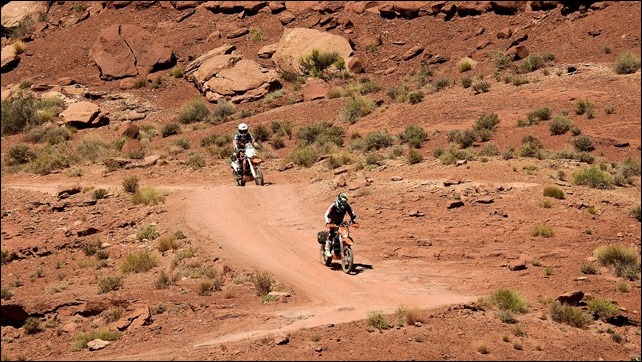
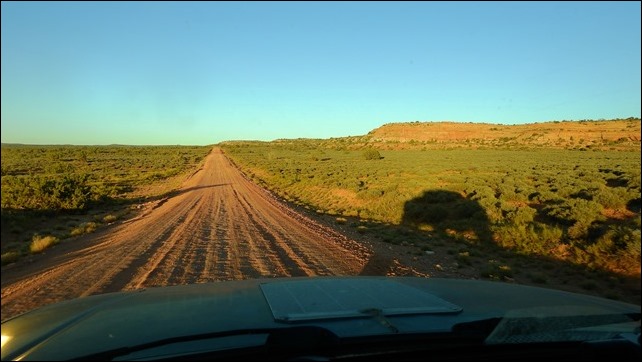
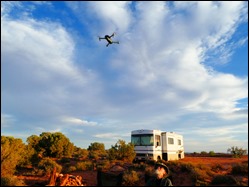
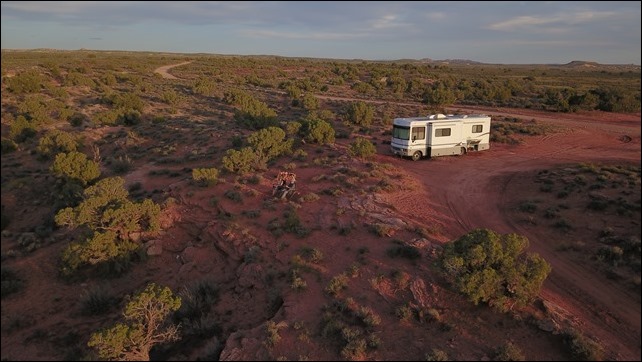
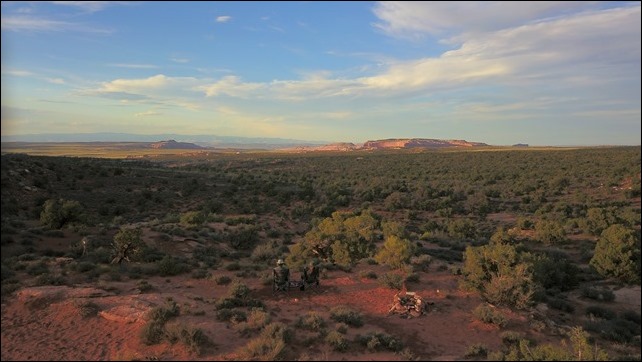
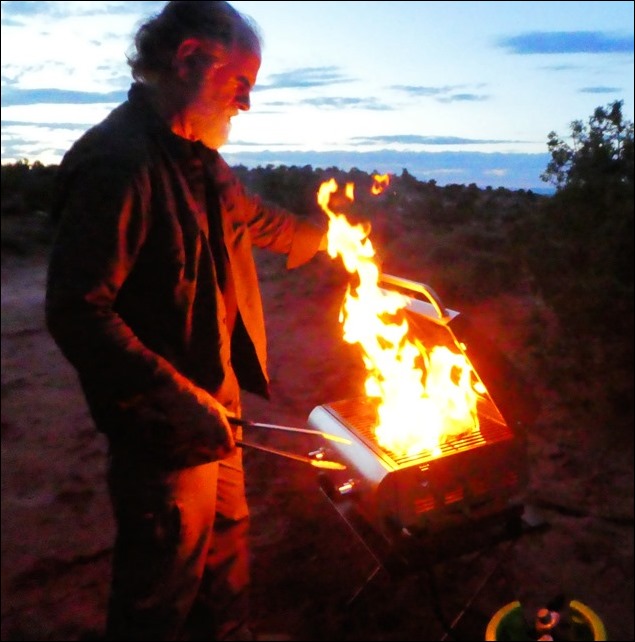
Comments
Utah Canyonlands — Moab and White Rim Road — No Comments
HTML tags allowed in your comment: <a href="" title=""> <abbr title=""> <acronym title=""> <b> <blockquote cite=""> <cite> <code> <del datetime=""> <em> <i> <q cite=""> <s> <strike> <strong>